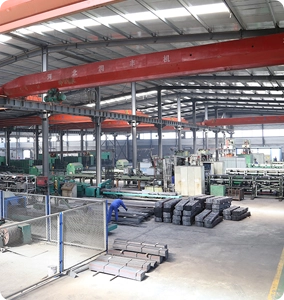Understanding Weatherstrip Seals Essential Protection for Your Home
Weatherstrip seals are an often-overlooked component of home insulation. These strips of material play a crucial role in maintaining the comfort and energy efficiency of our living spaces. By preventing air leaks, they help reduce heating and cooling costs, protect against the elements, and improve overall indoor air quality.
At its core, a weatherstrip seal is designed to fill gaps around doors and windows, which are common areas where drafts occur. There are various types of weatherstripping materials available, including foam, rubber, vinyl, and felt. Each type has its advantages and is suited to different applications. For instance, foam weatherstrip is flexible and easy to install, making it an excellent choice for irregular gaps, while metal weatherstrip is durable and often used in heavy-duty applications.
One of the primary benefits of installing weatherstrip seals is energy efficiency. According to the U.S. Department of Energy, nearly 30% of residential heating and cooling energy is lost through drafts and gaps. By sealing these leaks, homeowners can significantly reduce their energy consumption and save on utility bills. In fact, investing in weatherstripping can often pay for itself within a year in energy savings.
Additionally, weatherstrip seals enhance your home’s comfort
. Drafts can lead to cold or hot spots in a room, making it uncomfortable during extreme weather conditions. By ensuring that the indoor environment remains stable, weatherstripping contributes to a more pleasant living experience.weatherstrip seal

Beyond energy savings and comfort, weatherstrip seals also play a role in protecting your home from moisture and pests. Proper sealing reduces the chances of water entering through cracks and gaps, which can lead to mold growth and structural damage. Furthermore, tightly sealed areas can deter insects and rodents from entering, safeguarding your home from unwanted pests.
When choosing weatherstrip seals, it’s essential to assess the specific needs of your home. Consider factors such as the type of gaps you need to seal, the climate you live in, and the aesthetics of your home. For example, if you're in an area with harsh winters, you may want to opt for thicker, more insulating materials. Conversely, in milder climates, lighter materials may suffice.
Installation of weatherstrip seals can be a straightforward DIY project. Most weatherstripping solutions come with adhesive backing or simple installation mechanisms that require minimal tools. However, for those who prefer professional assistance or are dealing with more complex issues, hiring a contractor could be a wise choice.
In conclusion, weatherstrip seals are an essential yet often underestimated element of home maintenance. They provide a shield against drafts, reduce energy bills, enhance comfort, and protect against moisture and pests. As we continue to focus on energy efficiency and sustainable living, investing in quality weatherstripping is a proactive step towards creating a more comfortable and energy-efficient home. Whether you’re a homeowner looking to make small improvements or preparing for a significant renovation, don’t overlook the impact of effective weatherstripping. Your home will thank you for it!
-
XIANGFAN Rubber Tape-Ultimate Solutions for All Your Insulation NeedsNewsJun.24,2025
-
XIANGFAN Rubber Tape-Protection for Industrial and Residential ApplicationsNewsJun.24,2025
-
XIANGFAN Rubber Tape: Superior Safety and Sealing for Demanding EnvironmentsNewsJun.24,2025
-
XIANGFAN Rubber Tape: Reliable Solutions for Every Electrical ChallengeNewsJun.24,2025
-
XIANGFAN Electrical & Industrial Tape: Powering Reliability Across IndustriesNewsJun.24,2025
-
XIANGFAN Electrical & Industrial Tape: Excellence in Every ApplicationNewsJun.24,2025
